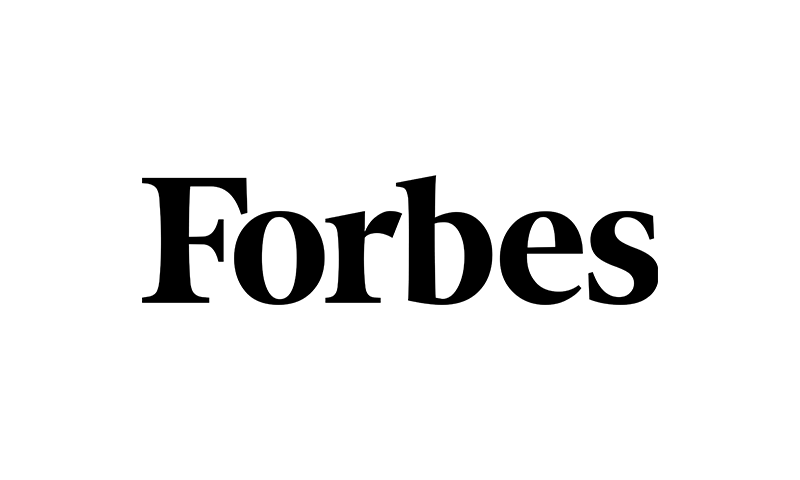Article originally posted on WebMD.com.
Terri Huffstetler needed an IV drug in the emergency room to treat a blood clot.
The 58-year-old Thrall, TX, woman knew her hospital was in her insurance plan’s network, yet she was shocked to receive a bill for $1,437.62 from E-Merge Physicians.
“I just assumed because the hospital was in my insurance provider network that the ER doctors were too. Instead, the ER doctors were out-of-network, and my insurance only paid $153.38 of the total bill of $1,591, and I owed the rest.”
Huffstetler worries how she will pay for the latest bill while she is still paying off other medical bills. “I can’t afford to get surprise bills like this. This shouldn’t be happening – why aren’t these hospitals required to advise the patients that their ER physicians may not be in their insurance network?”
Surprise bills happen when patients like Huffstetler are billed at highly inflated prices from out-of-network providers they didn’t select in advance.
Nearly half of Americans (44%) said either they or a family member had received at least one surprise medical bill in the past, and most of them worried about how they would pay for it, according to an October survey by consumer group Families USA. The national survey, done by nonpartisan pollster Perry Undem, surveyed 1,000 registered voters equally divided among Republicans, Democrats, and independents.
Among those who had received a surprise medical bill:
- 29% said the bill had been for $2,000 or more.
- 19% % said they were billed for between $1,000 and $2,000.
- 28% said the bill was between $501 and $1,000.
- 23% said they got a surprise bill totaling less than $500.
The vast majority said they found it difficult to pay off this unexpected obligation: 34% said it was very difficult, 35% said it was somewhat difficult, and another 11% said they were unable to make good on the surprise bill.
In addition, the vast majority of voters polled said they support federal legislation to protect patients from surprise medical bills. A bipartisan Senate bill would end surprise bills. If it’s enacted and funded, patients would pay only the in-network amount for out-of-network emergency care, for certain diagnostic and support services provided by out-of-network providers at in-network facilities, and for out-of-network care provided at in-network facilities without the patient’s informed consent. Congress will take up the legislation again in January.
Hospital and Provider Shopping to Be Encouraged
President Donald Trump signed an executive order in June directing federal health agencies to require hospitals and health plans to make prices clearer to consumers. “To make fully informed decisions about their health care, patients must know the price and quality of a good or service in advance. … Improving transparency in health care will also further protect patients from harmful practices such as surprise billing,” the president said in his announcement.
The result was two federal rules that require information about prices to be made available to the public. The final rule goes into effect Jan. 1, 2021, and requires hospitals to post charges for all their services and items, the billing codes, and descriptions to make comparisons easier. In addition, they must post negotiated charges for 300 common services that are scheduled in advance such as imaging (CT scans/MRIs), lab tests, outpatient visits, and lab tests or bundled services like a cesarean delivery, including pre- and post-delivery care.
The proposed rule would require most employer-based group health plans and individual and group health insurance plans to share information with members about prices and cost-sharing, including plan deductibles, copays, or co-insurance payments. Health plans will have to create an online tool to give consumers access to their cost-sharing information, including an estimate of what they are responsible for, and to disclose on a public website their negotiated rates for in-network providers and allowed amounts paid for out-of-network providers. “This would empower consumers to shop and enable them to compare costs between specific providers before receiving care,” the Centers for Medicare and Medicaid Services (CMS) says in a fact sheet.
Surveys show that consumers want to know their health care costs in advance. TransUnion Healthcare, owned by TransUnion, a credit reporting bureau, surveyed more than 2,500 people in August who had a health care visit (hospital, clinic, doctor’s office) in the past year, and found that 75% of them had visited their provider or insurer’s website to research health care costs. The youngest generations — Generation Z and millennials — tended to do the most research.
In addition, 62% of the people surveyed said knowing their out-of-pocket expenses in advance affects their decision to pursue care, and 49% said having clear information on expected out-of-pocket costs before receiving treatment affects their decision to use a health care provider.
Patients are also seeking more information about health care prices because their costs have increased. Average annual family premiums for employer-sponsored health insurance rose 5% to $20,576 this year, while deductibles rose 162% (the average single deductible is $1,655, vs. $826 a decade ago), according to the 2019 benchmark KFF Employer Health Benefits Survey. Meanwhile, workers’ wages rose 3.4% and inflation rose 2% over the same period.
Hospitals with Consumer Cost Estimate Tools
A few innovative health systems have already responded to consumer demand for transparent prices, launching online cost estimator tools a few years ago.
“We did all this far before the CMS final rule was proposed — over the last decade, we’ve been aware of a growing number of patients who signed up for high-deductible insurance plans ranging from $3,000 to $6,000. That started a trend where patients requested estimates in advance to know what they would have to pay out-of-pocket,” says Dan Weaver, vice president of communications at UCHealth in Colorado, a network of 12 acute care hospitals and more than 150 clinics throughout Colorado, southern Wyoming, and western Nebraska.
“We recognized that our industry needed to evolve to help patients understand up front what the cost of care would be rather than after we knew what services they consumed,” says Matthew Muhart, executive vice president and chief administrative officer at Memorial Healthcare System, a large public health care system in South Florida.
Both health systems have tools on their websites that quote prices for consumers who are uninsured (self-pay) or insured. The insured consumer completes a short form on Memorial’s website, entering the insurance company name and member ID, which the tool then verifies. At UCHealth, consumers visit their patient portal to access cost estimates. UCHealth has a video explainer for insured patients.
Both hospitals designed the online tools to include about 350 common procedures and services and all their insurance contracts. The tools connect to the individual’s health plan and member benefits and retrieves the costs for deductibles, including what remains for this year, copays, and co-insurance to calculate the total amount the patient will owe for a specific procedure or service after insurance is applied.
Price Guarantees
Memorial guarantees the prices quoted for 30 days. Muhart says rather than making patients pay for inaccurate quotes, he put the burden on his team to have accurate price predictions. “We’ve only had a handful of mismatches between predicted and actual prices, and in those cases, the hospital has absorbed the costs. Our consumers deserve fixed prices.”
Both pricing tools include a range of outpatient, inpatient, and technical services such as imaging and laboratory tests. For example, the top searches at Memorial are for labor and delivery, doctor office visits, bariatric surgery, general surgery, MRIs, lab tests, mammography work, CT scans, and ultrasound, says Muhart.
Weaver says UCHealth has a nearly 100% accuracy rate for estimates it provided for fixed services such as imaging and lab tests that are more predictable. For other services, the prices quoted are at least 90% accurate.
Both price tools exclude some professional fees from their price quotes. Weaver says UCHealth can provide fees only for providers it employs, which is nearly 1,000 doctors and advanced practice providers across its hospitals and clinics. Hospitals can’t include fees for contracted providers, due to federal anti-trust laws prohibiting them from accessing their contracts, Weaver says.
Memorial hasn’t tackled bundling all the services patients may receive from specialists such as radiologists, pathologists, and anesthesiologists. “In the future, we would like to provide a price quote for both professional and technical services,” says Muhart.
The digital tools are popular, according to website analytics. For example, nearly 10,000 unique visitors monthly click on the Memorial price tool page, including people in other countries, and the vast majority of comments are positive, says Muhart.
One user says, “I love the transparency and the information provided here. So often we are in the dark and we just do the procedure our doctors tell us to do without any idea what the cost is going to be.”
Another user commented, “Very impressive, I love it! I would love it if my healthcare system was this straightforward with the procedures offered. I always feel like it’s a wild card and I just hold my breath and don’t open the bill for a few weeks.”
A New Prescription Price Tool Increases Compliance
UCHealth is the first health system to build and put in place a prescription price tool. It partnered with RxRevu about 3 years ago to come up with the tool (SwiftRx Direct), which is embedded in the hospital’s electronic medical record system. Providers can check whether a drug they recommend to a patient is covered by the patient’s insurance pharmacy benefits, and if not, see what less expensive ones are covered.
Studies have consistently shown that 20% to 30% of medication prescriptions are never picked up by patients. “This is due to miscommunication between what the provider believes the patient needs and what the patient can actually afford,” says Richard Zane, MD, UCHealth’s chief innovation officer and a professor and chair of the department of emergency medicine at the University of Colorado School of Medicine in Denver.
Since starting the prescription price tool about 3 years ago, the number of prescriptions picked up by UCHealth patients who visit the ER departments has increased to 90%, Zane says.
He described a common scenario to illustrate how a doctor or nurse would use the prescription tool. A female patient has asthma and needs an albuterol inhaler. The doctor has the patient’s medical record up on his computer that already has her insurance information. He types “asthma” in the prescription tool page, and it displays several medication options with the prices the patient would pay.
The doctor tells the patient the albuterol inhaler would cost her $70, and the patient says that’s too expensive. The doctor then sees that the price is $3.80 for the medication Proventil and shares that with the patient. The patient asks him to order that one.
“We believe in shared decision-making – it’s far better to prescribe a medicine that’s pretty good and have the patient take it than not take the medication that we think is excellent. Also, because the drugs are more affordable, patient compliance has increased, which is associated with lower use of health care,” says Zane.
RxRevu is collaborating with Cerner Corp., a large electronic health record provider, to use the prescription price technology, which will make it available to thousands more providers.
A Health Plan’s Online Cost Estimator Saves Money
Since 2015, members of Priority Health in Michigan have been visiting its website to use the cost estimator tool, which calculates their out-of-pocket costs for hundreds of procedures, including imaging, breast biopsies, lab tests, and surgeries such as tonsillectomy.
Priority Health was the first health plan in Michigan to use a digital cost estimator that now also includes prescription drug prices, says Nathan Foco, senior director of market analytics and digital products at Priority Health.
Members access the digital tool through their member portal and select the procedure, provider, and location they want. If the procedure costs more than the “fair market price,” which is the regional average for similar procedures, the cost estimator offers lower-price options. For example, “a colonoscopy in Michigan can cost between $1,200 and $4,500, so there’s a lot of variation in prices for the same procedure,” Foco says.
When members select a facility with a “fair market price,” the average savings is $680 per procedure. Members are then rewarded with Visa gift cards worth up to $200, according to Priority Health.
Priority Health has spent $2.6 million on its rewards program, compared to a total health care savings of $11 million since the tool launched in 2015, according to its figures.
Foco recognizes that a limitation of the cost estimator tool is that it can’t predict provider behavior. “It’s trickier on the inpatient side, where a doctor may order another lab test or anesthesia service or extend the stay. Regardless, this tool is a step in the right direction of giving consumers information they want. We have also expanded the tool to help consumers understand how their benefits are applied to procedures.”



